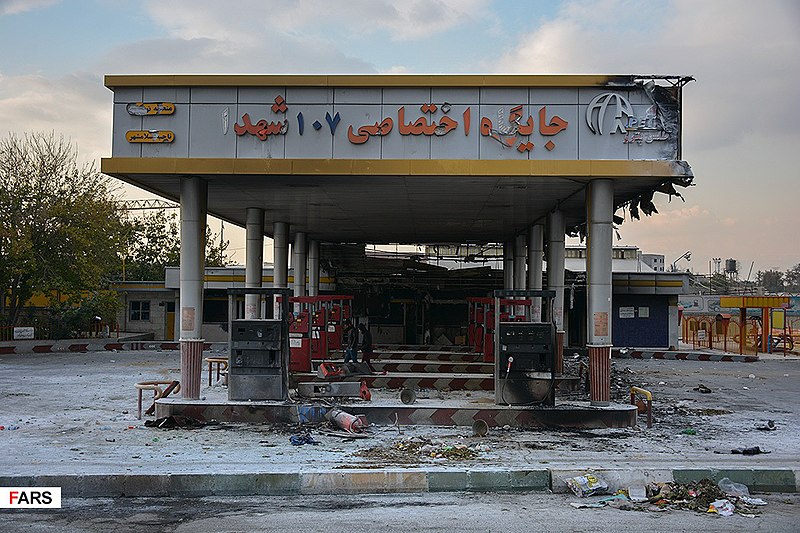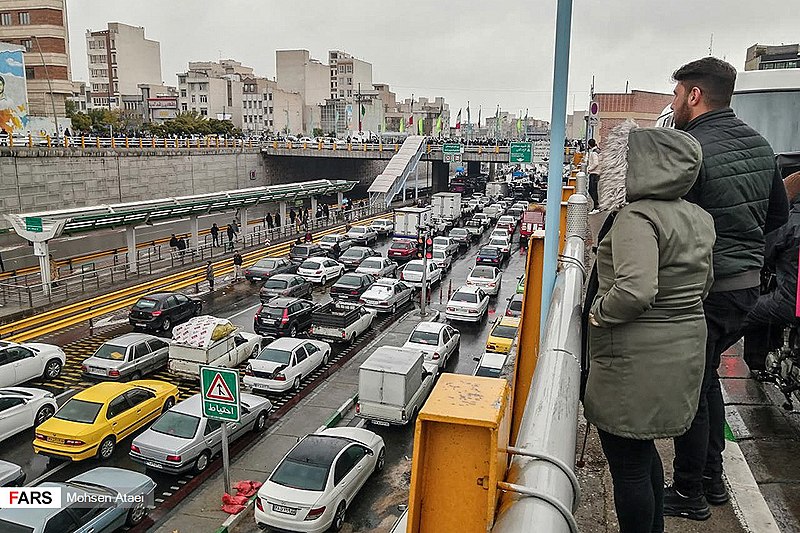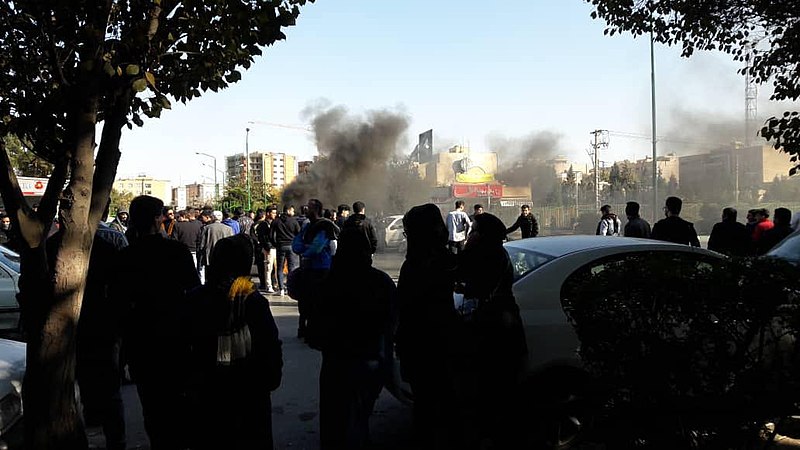Minds of the Movement
An ICNC blog on the people and power of civil resistance
by Amber FrenchDecember 26, 2019
Today, December 26, is a day of remembrance in Iran, observed by a moment of silence for the approximately 1,500 estimated to have been killed in the government crackdown on protesters since late November. During this moment, people will stop wherever they are—in the street, on the sidewalk, at restaurants. Their standstill is a low-risk, hard-to-repress nonviolent method designed to send a clear signal of dissent and disapproval to the Rouhani government.
It is not unlike a signature nonviolent method during the 1979 revolution when people across the country switched their lights off in unison to show their collective disdain of the government.
Mohsen Sazegara supported the establishment of the Islamic Republic back then. He later turned against the Islamic Republic and has been one of Iran’s leading dissidents ever since. For the past decade, filmed at his home near Washington, D.C., his daily webcasts have bypassed Iran’s censors and firewall and served to educate hundreds of thousands of people on the use of nonviolent civil resistance to achieve democracy and human rights.

Fuel protests in Iran, November 18, 2019. Source: Fars News/Wikipedia (CC BY 4.0, unedited).
Last week I interviewed him. Our wide-ranging conversation covered the support roles that Sazegara has played to Iranian movements over the years, as well as more detailed and practical questions such as how much it costs him to produce webcasts and what type of equipment he uses.
He began webcasting from his home during the Green Movement that emerged in Iran following the 2009 presidential election. To reach Iranians with uncensored news, commentary, and knowledge about civil resistance, he began recording five- to ten-minute video and audio webcasts nearly every day, disseminating them across five internet-based platforms. After ten years of persistence, Sazegara estimates his daily audience at between 100,000 and 200,000 people in Iran.
Minimal tech savvy and human resources are required for this work. On Telegram and Google Groups, he shares audio-only files; on YouTube and Facebook, it’s video, and this involves separating audio from video. But according to Sazegara, many free apps do this for you. He also posts on Twitter. A friend sometimes helps him research and fact-check news for that segment of his video, but he follows Iran news already very closely with his work in journalism and politics. “Some people have told me ‘go to Instagram as well,’” Sazegara explains. “I have an Instagram account, but I’m not good at Instagram. I haven’t tried this with Instagram.”
His material and time costs are minimal, which he lists as:
- One to two hours of his time per day
- A start-up budget of as low as $100 (a tripod, a Bluetooth earbud, and a backdrop—Sazegara chose an image of Washington, D.C. monuments lit up at night)
- A smartphone
- A reliable internet connection
When I light-heartedly suggest that 2020 will be the year of “hashtag Mohsen, hashtag civil resistance,” he laughs, shrugs, and acknowledges: “In Iran we have something between 50 and 60 million internet users. Maybe now it’s more than that. More than 40 million—44 million are Telegram users. More than 30 million—32 million are Instagram subscribers. And the third social network after them is Twitter, which is six to seven million.”
The content of his videos—which takes up one sheet of paper per day—includes an Iranian news round-up, assessments of new developments in Iran, and a zoom-in on strategies and tactics from other nonviolent movements in the world. The assessments he shares focus on recent political, social, and economic affairs—“what’s behind the curtain,” as he describes it.

Fuel protests in Iran, November 18, 2019. Source: Fars News/Wikipedia (CC BY 4.0, unedited).
What types of events does he not cover, and why?
“Oh, definitely I don’t cover violent tactics. Sometimes there are violent tactics [on the ground in Iran] as well. In some parts of Iran, especially these days, some political groups, they have a tendency toward violence. They get the gun, or [engage in] fighting, or revenge. I don’t cover these types of tactics or news. Or if I talk about them, definitely I try to explain why they are harmful to the democratic movement in Iran, and why we should go with civil resistance if we expect to reach a democracy in Iran.”
“The Power of Silence”
Several days ago, Reuters released an estimate that approximately 1,500 people had been killed in the crackdown on protesters in Iran since November. This estimate may be low, as the government is putting pressure on families not to release the name of someone killed by security forces. As Sazegara related this to me, I understood why families want a low-risk way to commemorate the loss of their loved ones, united in a moment of silence with others across the country. Notably, “The Power of Silence” and “The Voice of Silence” are currently in the running for title of the December 26 campaign.
Sazegara ends on a hopeful note, stating that if 3 million of Iran’s 84 million people observe the moment of silence, that would reflect the 3.5% participation rate that scholar Erica Chenoweth refers to for achieving success.
For all of his efforts, does Sazegara feel he has made a difference?
“I hope so,” he said. “I hope that I can be helpful with the democratic movement and human rights in Iran. I can’t say that I have a specific feeling about that. Definitely I would be happy if I can be helpful to the people of Iran, you know, because after 100 years of Iranian people’s struggle for democracy, and three big movements and revolutions during the last 100 years, and several struggles, I think the people of Iran deserve to have a democracy based on human rights—a secular democracy based on human rights in the future.”

Iranian protesters, Isfahan, November 13, 2019. Source: Nicolas Garon/Wikipedia (CC BY-SA 4.0, unedited).
To view Sazegara’s webcasts (in Farsi), see: YouTube, Facebook, Telegram, Google Groups, and Twitter (where he is less active).

Amber French
Amber French is Senior Editorial Advisor at ICNC, Managing Editor of the Minds of the Movement blog (est. June 2017) and Project Co-Lead of REACT (Research-in-Action) focusing on the power of activist writing. Currently based in Paris, France, she continues to develop thought leadership on civil resistance in French.
Read More